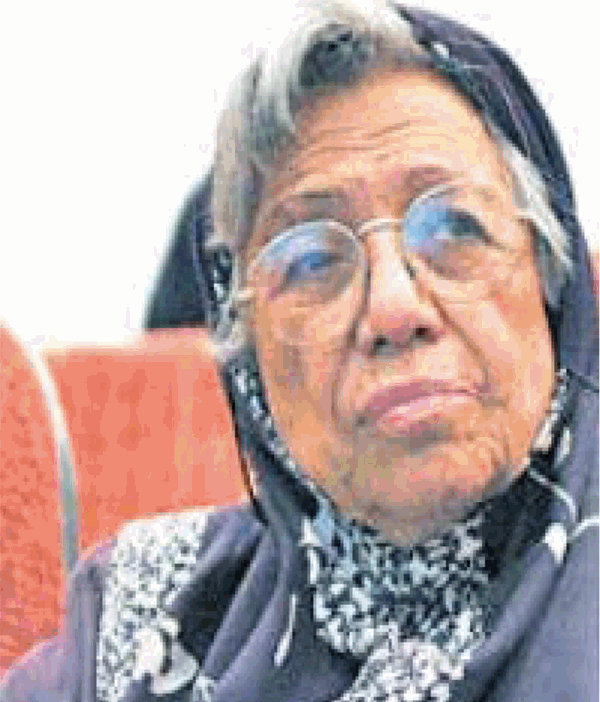
The news of Professor Badr al-Zamān Qarib’s passing was sad. This is a great loss for Iran’s academic community and beyond. Individuals such as her, however, continue their existence through their valuable works, even after they lose their physical presence.
During the years of my service at Tehran University, I enjoyed the company of many great scholars and Badr al-Zamān (Badri) Qarib was one of them. Having been her colleague was always a source of pride for me.
But how is it that Badri Qarib became such a towering figure? Let us not forget that she did not achieve her prominent status easily. She belonged to a generation of Iranians for whom the doors of great educational institutions of the world were still open. This generation could foster dreams and through diligence achieve them.
Badri Qarib was talented by nature, but serval opportunities in her life also paved the path for her advancement. She was fortunate to have been born into a cultured family, receive a good quality primary education, and finally, through her knowledge and talent, be accepted at Tehran University. She also had the good fortune to study with great professors, whose primary concern was not simply rapid publication of their material in specialized journals. These professors were truly erudite scholars who produced lasting and valuable contributions in their respective fields; they were primarily concerned with the advancement of knowledge and not their own personal gains. Badri Qarib learned a great deal from them and, having acquired the necessary knowledge and equipped with the riches of her native culture, she received a scholarship for distinguished students and set out to study abroad.
Professor Qarib belonged to a generation who studied in the West but never contemplated not returning to Iran. We, the Iranian students at foreign institutions in those times, studied well and then returned with a clear intention of paying back our debt to our country. Badri Qarib also returned and offered her knowledge to her country and never questioned her decision. She made a great contribution by opening the way for the study of the new field of ancient languages. After receiving her doctorate from the University of California, Berkeley, she began working at the University of Shiraz in the years 1965–66. At this time, the Sogdian language in which she was an expert was a vague and unknown subject matter in the minds of the university administrators. Now, after the passing of several decades, we have several experts in the field of Sogdian language and culture, experts who have received their training in Iran.
Dr. Badri Qarib’s seminal contribution, Farhang-e Soghdi, received an award shortly after its publication and, when this happened, many scholars and researchers of ancient languages of Iran were beaming with pride because this was another example of the brilliance of the country’s ancient culture, as well as proof that true knowledge finds its path and can achieve recognition and acknowledgement. After all we have not forgotten that not long ago the entire (linguistic) legacy of Iran’s ancient past was thought to be limited to a few hundred words and this opinion was even shared by some distinguished academic figures. Dr. Badri Qarib’s invaluable work was a response to such misperceptions, as well as a doorway to the better understanding of an important aspect of Iran’s hitherto unexplored cultural heritage.
It is in the extensive introduction to this work that Professor Qarib talks about the expanse of the impressive culture of the eastern territories of the Greater Iran in those ages. Sogd/Sogdiana is a familiar name in the Avestan text, as well as Achaemenid inscription and the writing of the Middle period with its rich literary tradition in Buddhist, Manichean and Christian texts. From the second millennium BCE, Sogdiana was known as a rich and vast cultural sphere encompassing the territories between the rivers Oxus and Syr Darya (Jaxartes). The cultural legacy of these territories is part of the rich Iranian cultural heritage. Political borders are to be distinguished from cultural borders and when we talk about the sphere of Iranian cultural influence, we can easily stretch it in the east to the rivers Oxus and Jaxartes, and in the north to the Eurasian plains south of Russia, and in the west to Mesopotamia, and in the south to the turquoise shores of the Persian Gulf.
May her memory be always cherished.




